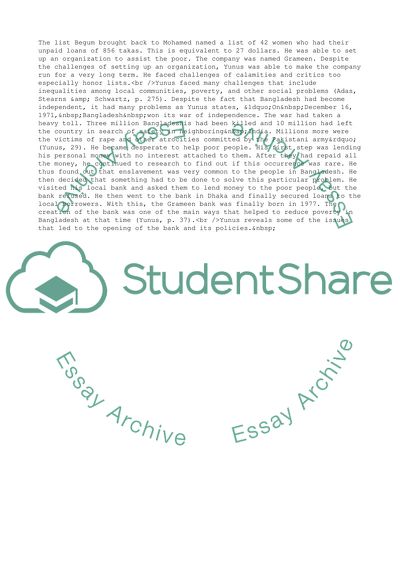Cite this document
(Based on Banker to the Poor by Muhammad Yunus Book Report/Review Example | Topics and Well Written Essays - 1750 words, n.d.)
Based on Banker to the Poor by Muhammad Yunus Book Report/Review Example | Topics and Well Written Essays - 1750 words. https://studentshare.org/business/1875016-based-on-quotbanker-to-the-poorquot-by-muhammad-yunus
Based on Banker to the Poor by Muhammad Yunus Book Report/Review Example | Topics and Well Written Essays - 1750 words. https://studentshare.org/business/1875016-based-on-quotbanker-to-the-poorquot-by-muhammad-yunus
(Based on Banker to the Poor by Muhammad Yunus Book Report/Review Example | Topics and Well Written Essays - 1750 Words)
Based on Banker to the Poor by Muhammad Yunus Book Report/Review Example | Topics and Well Written Essays - 1750 Words. https://studentshare.org/business/1875016-based-on-quotbanker-to-the-poorquot-by-muhammad-yunus.
Based on Banker to the Poor by Muhammad Yunus Book Report/Review Example | Topics and Well Written Essays - 1750 Words. https://studentshare.org/business/1875016-based-on-quotbanker-to-the-poorquot-by-muhammad-yunus.
“Based on Banker to the Poor by Muhammad Yunus Book Report/Review Example | Topics and Well Written Essays - 1750 Words”. https://studentshare.org/business/1875016-based-on-quotbanker-to-the-poorquot-by-muhammad-yunus.


